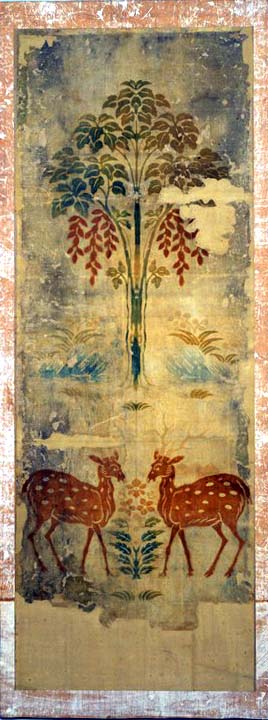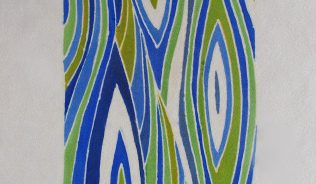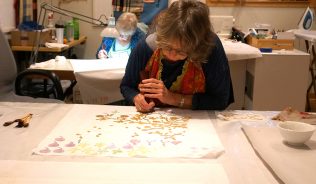Oldest wood-board dyeing in Japan
Kyo-kechi screen of deer and plants made in the Tenpyo period, stored in Shōsō-in (http://shosoin.kunaicho.go.jp/)
I strongly recommend you watch a beautiful video about the oldest Japanese fabric dyeing method,“kyou-kechi”. A dyeing artist, Sachio Yoshioka, did extensive research, reconstructed a wooden board, and replicated a kyo-kechi piece.
The majority of the kyo-kechi pieces are stored in Shōsō-in, the National Treasure House at Todai-ji temple in Nara prefecture for more than 1200 years. The kyo-kechi pieces were dedicated to Tojai-ji temple in 756 A.D. by Empress Komyo (701-760) to express her love to her lost husband, Emperor Shomu (701-756). In the video, you will see reconstructed kyo-kechi pieces: a dancer’s dress in the beginning and a screen hold by a dancer toward the end.
Around the middle of the video (1:45/4:02), you will see a series of processes how a kyo-kechi piece is made: You will notice in the picture the image is completely symmetrical as part of the kyo-kechi technique. A wooden board, on which a symmetrical patterns are carved, is folded at the center to sandwich a sheet of white fabric. The folded wooden boards are tied with ropes to add uniform pressure on the white fabric. Then, the fabric and the wooden board are dipped into a pot of natural dye again and again, color by color. The pressed boards prevent dyes permeating the fabric and create patterns. There are more than two thousand little holes on the boards to control this coloring process. When the patterns in blue are dyed, only the holes on the blues patterns are opened and other holes are plugged.

Dahlias in Japanese paintings/ fabrics
Tokyo National Museum (http://www.tnm.jp/) I visited my friend’s beautiful dahlia garden yesterday (the photo below). The flowers were so ...




Leave a Reply